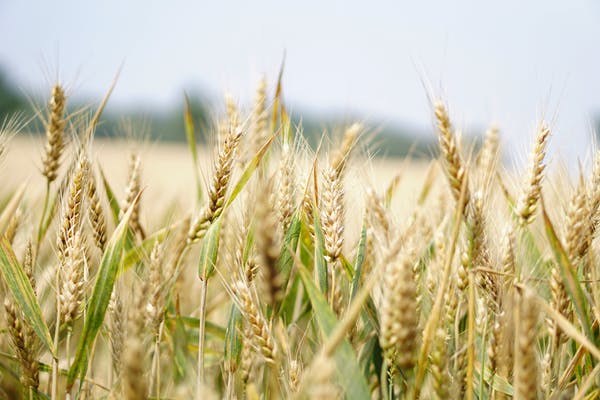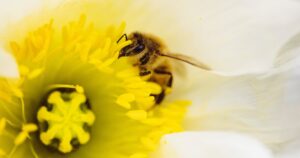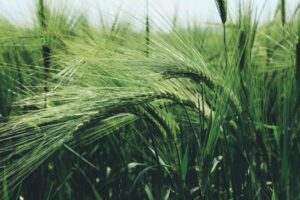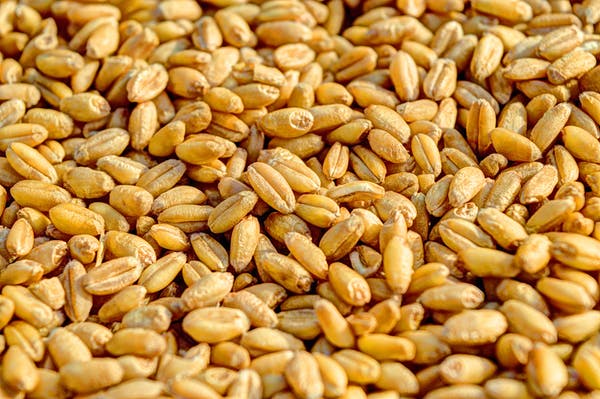
If you want to know which grain plays a vital role in supplying human food, read this article from Farmidarena.
Wheat is a herbaceous, annual plant with a maximum height of 1.5 meters with spreading roots. Its stem is thin and hollow, along which there are knots at intervals, and in these areas the stem is thick.






What is the wheat plant?
If you want to know which grain plays a vital role in supplying human food, read this article from Farmidarena.Wheat is a herbaceous, annual plant with a maximum height of 1.5 meters with spreading roots. Its stem is thin and hollow, along which there are knots at intervals, and in these areas the stem is thick.
It is a hermaphrodite and self-fertilizing plant almost 96% of the time. This plant exists in two wild and domestic species.
The flowers of wheat are small and in the form of spikes, which are placed on a common axis, and the fruit is wheat-like and contains a lot of starch. Depending on its species, the wheat fruit is up to 10 mm long and 5 mm in diameter.
The history of the origin of wheat
Its origin dates back to at least 11,000 years ago. Archaeologists have discovered wheat in the Egyptian pyramids, which was stored in special containers. The original home of wheat is probably the Middle East and it did not reach Europe until the Stone Age.

Types of wheat according to the type of cultivation
We divide that according to the type of cultivation into two categories: spring and autumn. The seeds of these two types of wheat differ from each other in terms of color, texture, shape, etc. In addition, their growth and development conditions are also different
We cultivate these two types of that at two different times of the year. That grain has a groove that runs along the length of the grain. The depth of this furrow is high in autumn and low in spring . Both sides of this groove are round in spring and angular in autumn .
Spring wheat
As its name suggests, it is cultivated in early spring. After germination, the young plant grows in spring and early summer. Its product can be harvested until the end of summer. Spring is usually cultivated in areas where autumn cannot withstand the harsh winter cold. The yield of autumn is higher than that of spring .
Autumn wheat
Farmers cultivate this type of wheat in the Northern Hemisphere and in the autumn season, when the soil temperature is lower than 13 degrees Celsius. First, autumn seeds germinate. In the winter season, the plant remains as a small young plant and with the beginning of the spring season, it starts its growth and development again.
Autumn have deeper and denser roots than spring wheats. so that they penetrate up to 200 cm in the soil. This is because autumn has a longer growing season.
The place of wheat in the food chain
It is one of the main human food and one of the most important grains in the world. It provides about 20% of food energy and protein worldwide. With 225 million hectares of land, this product has the largest area of food crops in the world.
With more than 770 million tons of it grain production in 2017, it ranked second among cereals after corn.

Nutritional value
This grain is an important source of carbohydrates in the world. Starch is the dominant carbohydrate in it, which constitutes more than 90% of the total carbohydrates in the seed of this plant. Also, this plant, having about 13% protein, is the main source of vegetable protein in human food.
Proteins make up 7-22% of the dry weight of this plant. Although wheat proteins contain adequate amounts of some essential amino acids, they contain a small amount of the essential amino acid lysine. Therefore, the proteins of this plant are of low quality for human nutrition.
The fiber content of whole it is between 12 and 15% of its dry weight. Whole that is high in fiber, but refined wheat has almost no fiber.
Other compounds
This plant is rich in various antioxidants and has many health benefits. In fact, the amount of antioxidants in this plant is higher than other grains such as barley, oats, wheat and rye. Tartary buckwheat also has more antioxidants than the normal variety.
wheat harvest
It must be done on time. Harvesting earlier or later will reduce its quality. Early harvesting of the crop also causes the quality of that to decrease. The weight of the seeds increases until the seed ripens, but then it decreases.
The right time to harvest the seeds is when the endosperm of the wheat seeds has hardened and the moisture level has reached 18 to 20. This plant needs hot and dry weather during the harvest season.
The amount of seed used
Under normal conditions, that cultivation ranges from 60 kg in rainfed agriculture to 200 kg per hectare in irrigated autumn agriculture. In autumn crops of blue wheat, the ratio of seed consumption to production is one to twenty.
Including seed size, seed potential, spring and autumn cultivation, rainfed cultivation, low germination percentage, etc.
In this article, we discussed the definition of wheat and learned about the types of it. Considering the properties that this plant has for the body, it can be very useful for preparing food.
